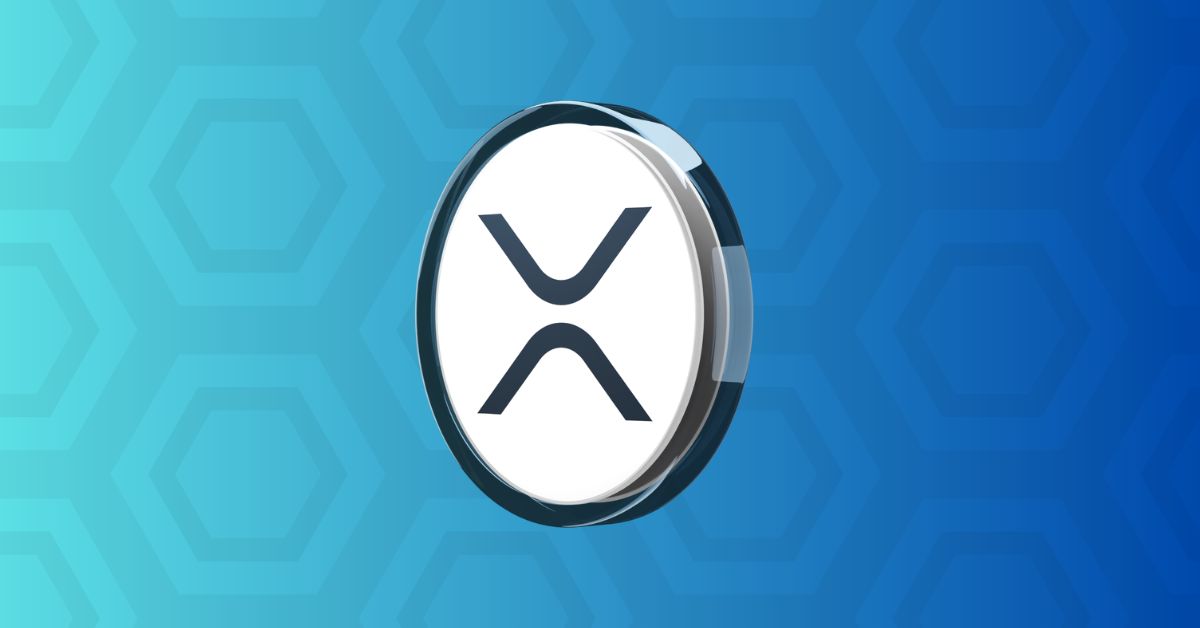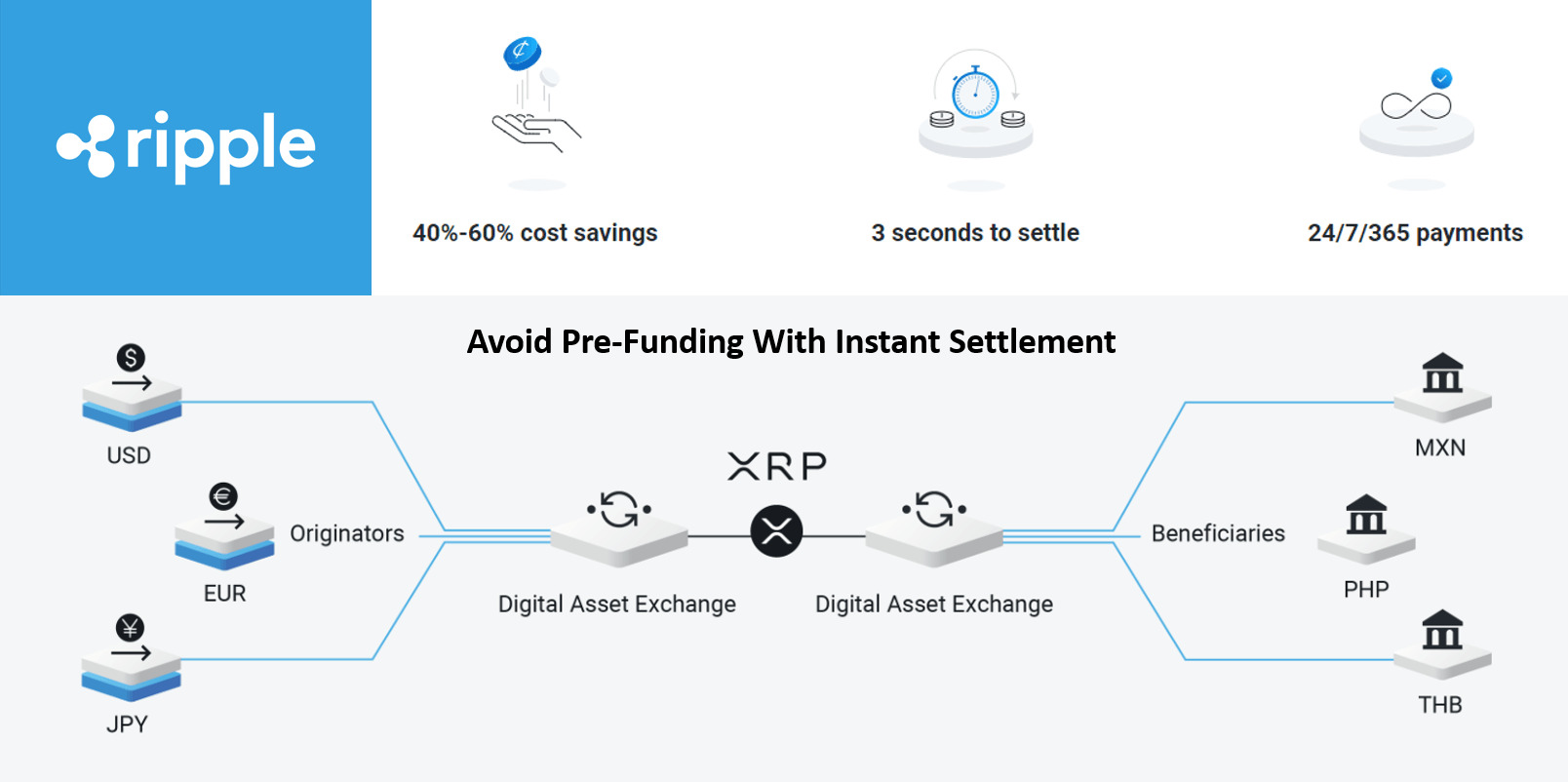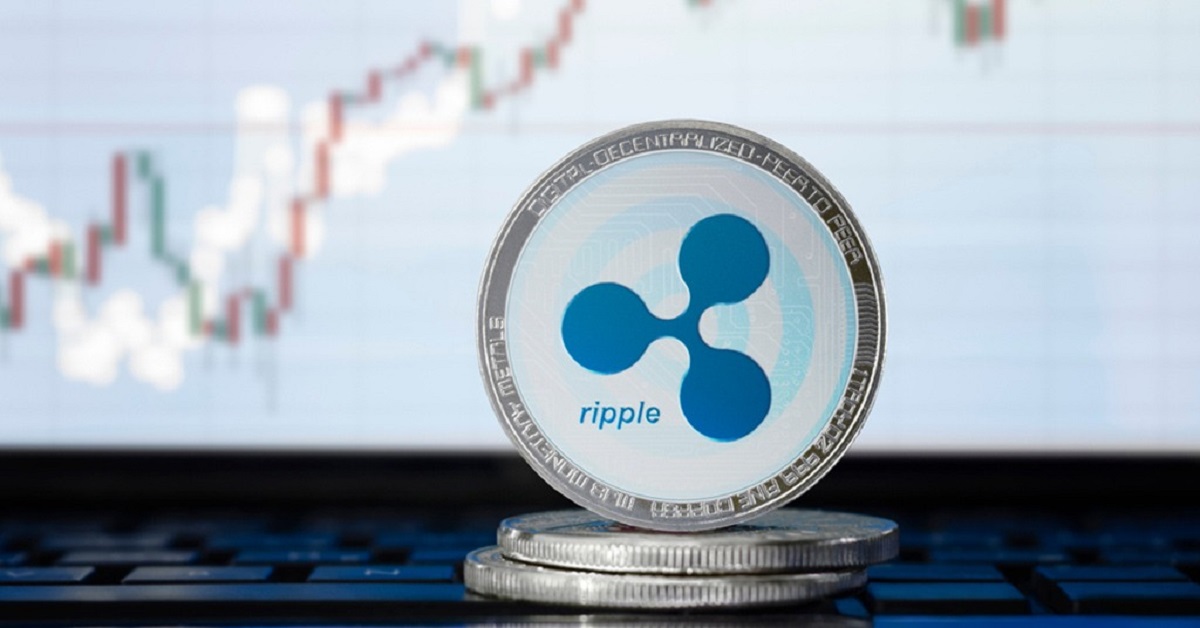Introduction
Ripple, a leading fintech company, is making waves in the world of digital currency and cross-border payments. With its innovative technology solutions, Ripple aims to revolutionize the way money moves globally, providing a faster, more secure, and cost-effective alternative to traditional banking systems. At the heart of Ripple’s success lies its strategic utilization of blockchain technology.
Blockchain, a distributed ledger system, has gained widespread recognition for its applications in cryptocurrencies like Bitcoin. However, Ripple takes a different approach and uses its own unique implementation of blockchain to power its network. In this article, we will delve into the specifics of the blockchain technology that Ripple employs and explore why it is an integral part of Ripple’s success story.
By understanding the underlying technology, we can gain insight into how Ripple provides fast and efficient transactions while ensuring trust and security in the digital asset space. So let’s dive in and explore what makes Ripple’s blockchain implementation stand out.
Overview of Ripple
Ripple, founded in 2012, is both a cryptocurrency (XRP) and a payment protocol that allows seamless transfer of money across borders. Unlike other cryptocurrencies that aim to replace traditional banking systems, Ripple works in collaboration with financial institutions, providing them with a cost-effective and efficient solution for cross-border transactions.
The main goal of Ripple is to enable fast, low-cost, and secure international money transfers. It provides a decentralized network where financial institutions can connect and perform transactions using Ripple’s native cryptocurrency, XRP. The Ripple network operates independently of central authority, making it highly resistant to censorship and manipulation.
Ripple’s technology is built on three core components: the Ripple Consensus Ledger (RCL), the Interledger Protocol (ILP), and the XRP Ledger. Together, these components form the backbone of Ripple’s innovative approach to cross-border payments.
It’s important to note that Ripple’s focus is primarily on the B2B (business-to-business) market, aiming to address the inefficiencies and high costs associated with international remittances. By leveraging blockchain technology, Ripple provides a unique solution to the challenges faced by traditional banking systems, offering faster settlement times and lower transaction costs.
Now that we have an overview of Ripple’s main objectives and its position in the financial industry, let’s delve deeper into the specific blockchain technology that powers the Ripple network.
What is Blockchain?
Blockchain is a decentralized digital ledger that records transactions across multiple computers. It operates on a peer-to-peer network, allowing participants to validate and store transactions without the need for a central authority or intermediary.
At its core, blockchain is a chain of blocks, where each block contains a list of transactions. These transactions are secured using cryptography and linked to the previous block, creating a chronological record of all transactions on the network.
Blockchain technology offers several key features that make it attractive for various industries:
- Decentralization: Blockchain eliminates the need for intermediaries by allowing participants to directly interact and transact with each other. This reduces costs and increases transparency and security.
- Transparency: Every transaction recorded on the blockchain is transparent and can be verified by anyone on the network. This fosters trust and accountability among participants.
- Security: Blockchain uses advanced cryptographic techniques to ensure the integrity and immutability of data. Once a transaction is recorded on the blockchain, it becomes nearly impossible to alter or tamper with.
- Efficiency: With a distributed network, blockchain enables faster transaction processing and settlement times compared to traditional systems.
Blockchain technology has gained significant attention and adoption beyond cryptocurrencies. Industries such as finance, supply chain management, healthcare, and more are exploring the potential of blockchain to enhance efficiency, transparency, and security.
Now that we have a foundational understanding of blockchain technology, let’s explore why Ripple has chosen to utilize this technology in its payment protocol.
Why does Ripple use Blockchain?
Ripple recognizes the immense value and potential that blockchain technology brings to the world of finance and cross-border payments. By leveraging blockchain, Ripple is able to address the limitations of traditional banking systems and provide a more efficient, secure, and cost-effective solution.
Here are some key reasons why Ripple has chosen to utilize blockchain:
- Decentralization and Trust: Blockchain technology allows Ripple’s network to operate in a decentralized manner, reducing the reliance on a central authority. This decentralization fosters trust, as transactions are validated by multiple participants on the network, eliminating the need for intermediaries.
- Increased Security: By utilizing blockchain’s cryptographic techniques, Ripple ensures the security and integrity of transactions. Once a transaction is recorded on the blockchain, it becomes tamper-proof, providing a high level of security and protection against fraud or manipulation.
- Transaction Speed and Efficiency: Ripple’s blockchain implementation enables fast and efficient cross-border payments. Traditional banking systems can be slow and costly, with transactions taking several days to settle. Blockchain technology allows Ripple to expedite transaction settlement times, sometimes in a matter of seconds, while reducing fees and improving overall efficiency.
- Lower Costs: Ripple’s use of blockchain significantly reduces costs associated with cross-border transactions. By eliminating intermediaries and streamlining the process, Ripple provides the opportunity for financial institutions to offer more competitive rates to customers.
- Interoperability: Ripple’s blockchain technology is designed to seamlessly integrate with existing banking systems through the use of the Interledger Protocol (ILP). This ensures compatibility and facilitates interoperability between different financial networks, enabling efficient cross-border payments.
Ripple’s decision to use blockchain technology aligns with its mission to revolutionize global payments and make them faster, more secure, and accessible to all. By harnessing the power of blockchain, Ripple is able to transform the traditional banking landscape and provide a platform for financial institutions to offer improved services to their customers.
Now that we understand why Ripple has embraced blockchain technology, let’s explore the specific blockchain components that power the Ripple network.
Ripple Consensus Ledger (RCL)
The Ripple Consensus Ledger (RCL) is the blockchain technology at the heart of Ripple’s payment protocol. It is designed to facilitate fast, secure, and decentralized transaction validation and settlement.
RCL operates on a unique consensus algorithm known as the Ripple Protocol Consensus Algorithm (RPCA). Unlike traditional Proof of Work (PoW) or Proof of Stake (PoS) algorithms used by many other blockchains, RPCA does not rely on mining or staking to validate transactions. Instead, it uses a consensus process that involves a network of validating servers owned by a variety of entities, including financial institutions and individual operators.
The RCL consensus algorithm ensures that all participants on the network agree on the validity and order of transactions without the need for a central authority. This allows for quick transaction confirmation times, typically within a few seconds, while maintaining high security and preventing double-spending.
One of the main advantages of RCL is its scalability. It can handle a high volume of transactions per second (TPS) without sacrificing speed or security. This makes it suitable for real-time gross settlement (RTGS) systems, where transaction finality and speed are crucial.
In addition to its consensus mechanism, RCL introduces the concept of gateways, which act as bridges between the Ripple network and traditional financial systems. Gateways are responsible for issuing and redeeming assets on the network, ensuring interoperability between traditional fiat currencies and digital assets.
RCL supports multiple asset types, including Ripple’s native cryptocurrency, XRP, as well as other assets such as fiat currencies, commodities, and even tokens representing real-world assets. This flexibility allows for efficient cross-border transactions, as value can be transferred in the form of any supported asset, minimizing friction and reducing the need for currency conversions.
Overall, the Ripple Consensus Ledger (RCL) plays a vital role in facilitating secure, fast, and decentralized transactions within the Ripple network. Its consensus algorithm, scalability, and support for multiple asset types make it a robust solution for cross-border payments and a key component of Ripple’s success.
Interledger Protocol (ILP)
The Interledger Protocol (ILP) is another important component of Ripple’s blockchain infrastructure, working in conjunction with the Ripple Consensus Ledger (RCL). ILP serves as an open, decentralized protocol that enables seamless transactions and interoperability between different ledgers and payment networks.
ILP was developed to address the challenges associated with transferring value across different systems. Traditional payment networks often lack interoperability, making cross-border transactions slow, costly, and complex. ILP seeks to overcome these limitations by creating a standardized protocol that can connect various ledgers, whether they are blockchain-based, traditional banking systems, or even non-blockchain distributed systems.
The key principle behind ILP is the concept of “connector” nodes. Connectors act as intermediaries that facilitate the routing and exchange of value between different ledgers. These connectors help establish trust and ensure that the transactions are executed accurately and securely.
ILP utilizes a unique addressing system called Interledger Addresses (ILAs) to identify participants and ledger accounts. ILAs are composed of a prefix followed by a unique identifier and are designed to be flexible enough to support various types of addresses, including blockchain addresses and bank account numbers.
One of the notable features of ILP is its atomic mode of transfer. This means that a transaction is either executed completely or not at all, preventing issues like partial settlement or double-spending. ILP ensures that funds flow smoothly from the sender to the recipient, regardless of the number of connectors involved in the transaction.
Through the use of ILP, Ripple aims to establish a globally interconnected network that can facilitate efficient and seamless cross-border transactions. ILP provides the necessary infrastructure to connect different payment networks, allowing for the transfer of various assets in a secure, transparent, and efficient manner.
Overall, the Interledger Protocol (ILP) plays a vital role in Ripple’s objective to enable interoperability between disparate ledgers and networks. By leveraging ILP, Ripple provides a framework for efficient and frictionless cross-border transactions, further amplifying the benefits of blockchain technology in the realm of global payments.
XRP Ledger
The XRP Ledger is the open-source blockchain technology that underpins Ripple’s digital currency, XRP. It serves as a decentralized ledger and consensus mechanism for validating and recording transactions involving XRP.
The XRP Ledger operates on a unique consensus algorithm called the XRP Ledger Consensus Protocol. Unlike traditional Proof of Work (PoW) or Proof of Stake (PoS) algorithms, the XRP Ledger Consensus Protocol does not rely on mining or staking. Instead, it uses a consensus process where a network of trusted validators validates and agrees on the order and validity of transactions.
The XRP Ledger has several distinguishing features:
- Fast and Scalable: The XRP Ledger boasts one of the fastest settlement times among blockchain networks, with transactions typically settling in just a few seconds. Additionally, it can handle a high throughput of transactions, making it scalable for global payment systems.
- Low Transaction Fees: XRP Ledger transactions have very low fees compared to traditional banking systems and even other cryptocurrencies. This makes XRP an attractive option for financial institutions and individuals looking to reduce costs in cross-border transactions.
- Resilient and Efficient: The XRP Ledger is designed to be highly resilient and efficient, capable of handling millions of transactions per second. It achieves this by using a unique data structure, known as the HashTree, which allows for efficient compression and storage of transaction information.
- Interoperability: The XRP Ledger supports the issuing and trading of not only XRP but also other tokens and assets. This flexibility enables seamless interoperability between different currencies and assets, improving liquidity and facilitating cross-border transactions.
- Decentralization and Security: The XRP Ledger is decentralized, with validators distributed across a diverse set of organizations and geographies. This ensures the integrity and security of the network, making it resistant to tampering and ensuring the trustworthiness of transactions.
Through the XRP Ledger, Ripple aims to provide a secure, fast, and cost-effective solution for international remittances and cross-border transactions. XRP provides liquidity and serves as a bridge currency for facilitating the transfer of value between different fiat currencies. Financial institutions can leverage the XRP Ledger to access liquidity on demand and expedite settlement processes.
In summary, the XRP Ledger forms a vital component of Ripple’s ecosystem, providing the infrastructure for fast, scalable, and secure transactions involving XRP. It enables Ripple to deliver on its mission of revolutionizing cross-border payments and making them more accessible, efficient, and cost-effective.
Comparison with other Blockchains
Ripple’s blockchain implementation sets itself apart from other blockchain networks with its unique features and focus on facilitating cross-border payments. While there are several similarities between Ripple and other blockchains, there are also key differences that make Ripple a distinct player in the cryptocurrency and fintech space.
When comparing Ripple with other blockchain networks like Bitcoin and Ethereum, some notable differences include:
- Consensus Mechanism: Ripple uses a unique consensus algorithm that does not rely on mining or staking like Bitcoin and Ethereum. Instead, Ripple’s consensus mechanism is based on a network of trusted validators that agree on the order and validity of transactions, enabling faster settlement times and lower energy consumption.
- Transaction Speed and Scalability: Ripple’s blockchain technology allows for incredibly fast transaction settlement times, typically within a few seconds. Bitcoin and Ethereum, on the other hand, can experience longer transaction confirmation times due to their proof-of-work consensus mechanisms. Additionally, Ripple’s blockchain can handle a high volume of transactions per second, making it highly scalable for global payment systems.
- Use Case Focus: Ripple has a specific focus on revolutionizing cross-border payments and enabling financial institutions to facilitate fast, low-cost transactions. Bitcoin and Ethereum, on the other hand, have broader use cases, including digital currencies, smart contracts, and decentralized applications.
- Token Utility: While Bitcoin and Ethereum aim to be store-of-value assets, Ripple’s XRP primarily serves as a bridge currency in the Ripple network. XRP is used to facilitate fast and seamless transactions, providing liquidity for cross-border payments and reducing settlement costs.
- Interoperability: Ripple’s blockchain technology incorporates the Interledger Protocol (ILP), which allows for interoperability between different ledgers and payment networks. This enables seamless value transfer across various systems, including traditional banking systems, cryptocurrencies, and other blockchain networks.
These differences position Ripple as a specialized solution tailored for the financial industry’s needs, particularly in the realm of cross-border payments. While other blockchains focus on broader applications, Ripple’s targeted approach allows it to address specific pain points in international remittances and provide a streamlined solution for financial institutions.
It’s important to note that each blockchain network has its own strengths and weaknesses, and different use cases may require different blockchain implementations. Ripple’s blockchain technology stands out in its ability to facilitate fast, secure, and low-cost cross-border transactions, making it a noteworthy competitor in the blockchain space.
Use Cases of Ripple
Ripple’s blockchain technology has found practical use cases in various industries, primarily focused on revolutionizing cross-border payments. Here are some of the key use cases of Ripple:
- Remittances: One of the primary use cases of Ripple is in the remittance sector. Traditional cross-border payments can be slow, expensive, and subject to high fees. Ripple’s technology, with its fast settlement times and lower transaction costs, provides a more efficient alternative for sending money across borders.
- Liquidity Management: Financial institutions can leverage Ripple’s blockchain and its native cryptocurrency, XRP, to improve liquidity management. By using XRP as a bridge currency, financial institutions can facilitate instant and low-cost transfers of value between different fiat currencies, reducing the need for multiple intermediaries and minimizing settlement risk.
- Microtransactions and IoT Payments: Ripple’s fast transaction processing and low fees make it suitable for microtransactions. By enabling frictionless, low-cost transactions, Ripple can facilitate micropayments in applications such as IoT (Internet of Things) devices, content monetization, and pay-per-use services.
- Supply Chain Finance: Ripple’s blockchain technology can enhance efficiency and transparency in supply chain finance. By facilitating faster and more secure payments between parties involved in supply chain transactions, Ripple can help streamline processes and reduce costs for businesses operating within global supply chains.
- Remittance Marketplaces: Ripple’s technology can support the creation of remittance marketplaces, where individuals and businesses can connect directly to exchange value and send cross-border payments. These marketplaces can leverage Ripple’s blockchain to provide faster settlement times, lower fees, and access to a wide range of currencies.
- Central Bank Digital Currencies (CBDCs): Ripple’s blockchain technology has gained interest in the context of central bank digital currencies (CBDCs). The fast settlement times and interoperability of Ripple’s blockchain make it a potential solution for central banks exploring the implementation of digital currencies.
These use cases demonstrate how Ripple’s blockchain technology can effectively address pain points and inefficiencies in traditional cross-border payments and provide solutions for various industries. Ripple’s focus on speed, security, and cost-effectiveness positions it as a promising player in the fintech space, leading the way in transforming global payment systems.
Conclusion
Ripple’s utilization of blockchain technology has propelled the company to the forefront of the fintech industry, offering innovative solutions for cross-border payments. By leveraging blockchain’s decentralized and secure nature, Ripple has created a robust infrastructure that facilitates fast, low-cost, and transparent transactions.
Through the Ripple Consensus Ledger (RCL), Ripple has established a decentralized network that enables financial institutions to connect and transact seamlessly, providing a competitive alternative to traditional banking systems. The use of the Interledger Protocol (ILP) further enhances interoperability between different ledgers and payment networks, ensuring frictionless value transfer.
Ripple’s XRP Ledger, with its unique consensus algorithm and support for multiple asset types, serves as a backbone for efficient and scalable transactions involving XRP. The XRP Ledger’s fast settlement times, low fees, and liquidity make it a reliable bridge currency for cross-border payments, reducing costs and settlement risks for financial institutions.
Ripple’s blockchain technology has been successfully applied in various use cases, including remittances, liquidity management, microtransactions, supply chain finance, and remittance marketplaces. These applications highlight Ripple’s commitment to transforming the way money moves globally, improving efficiency, reducing costs, and enhancing financial inclusion.
As blockchain technology continues to evolve, Ripple’s innovative approach coupled with its strategic use of blockchain has positioned the company as a key player in revolutionizing the financial industry. By leveraging the advantages of blockchain, Ripple has disrupted traditional payment systems, offering a more accessible, secure, and efficient solution for cross-border transactions.
In conclusion, Ripple’s use of blockchain technology has paved the way for a more seamless, cost-effective, and inclusive global financial ecosystem. With its focus on cross-border payments, Ripple has proven that blockchain can be a transformative force in the pursuit of a more connected and efficient financial world.

























